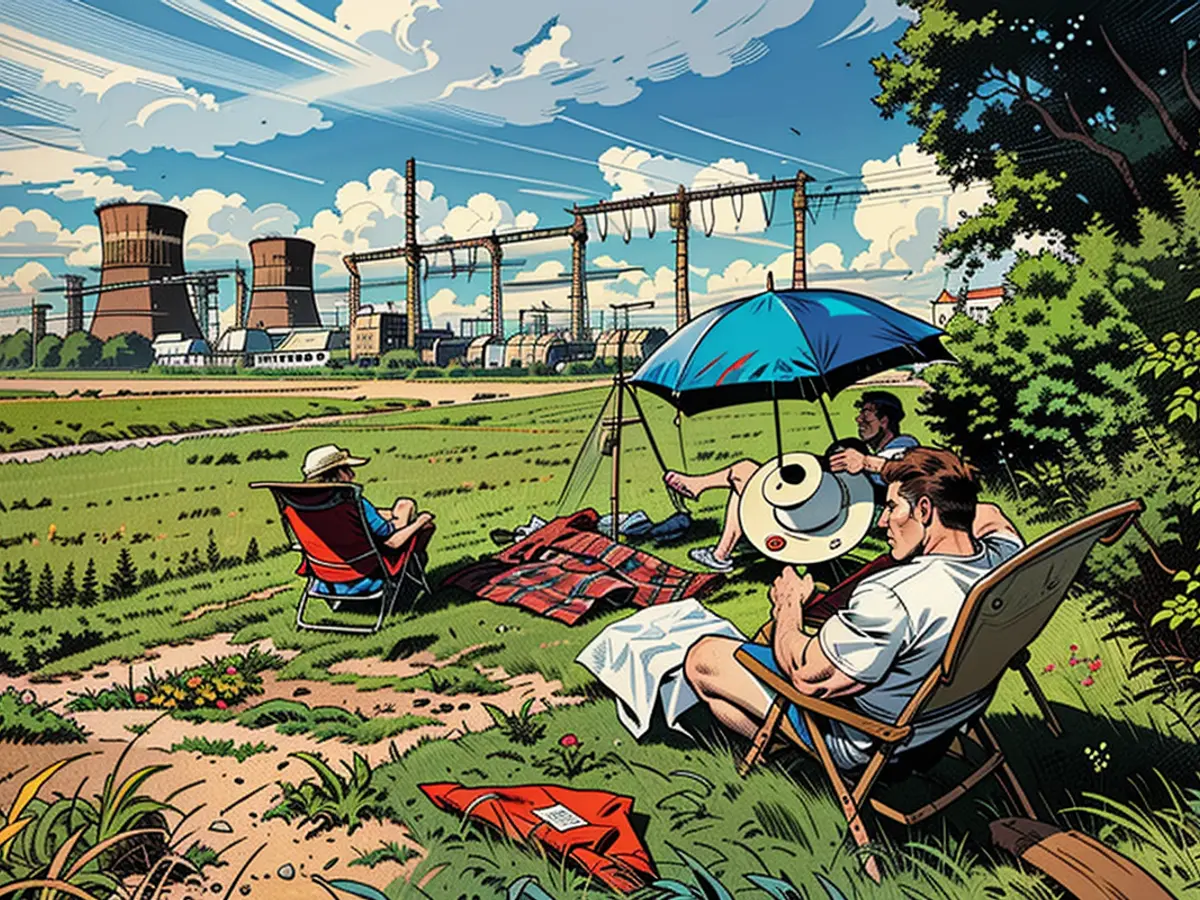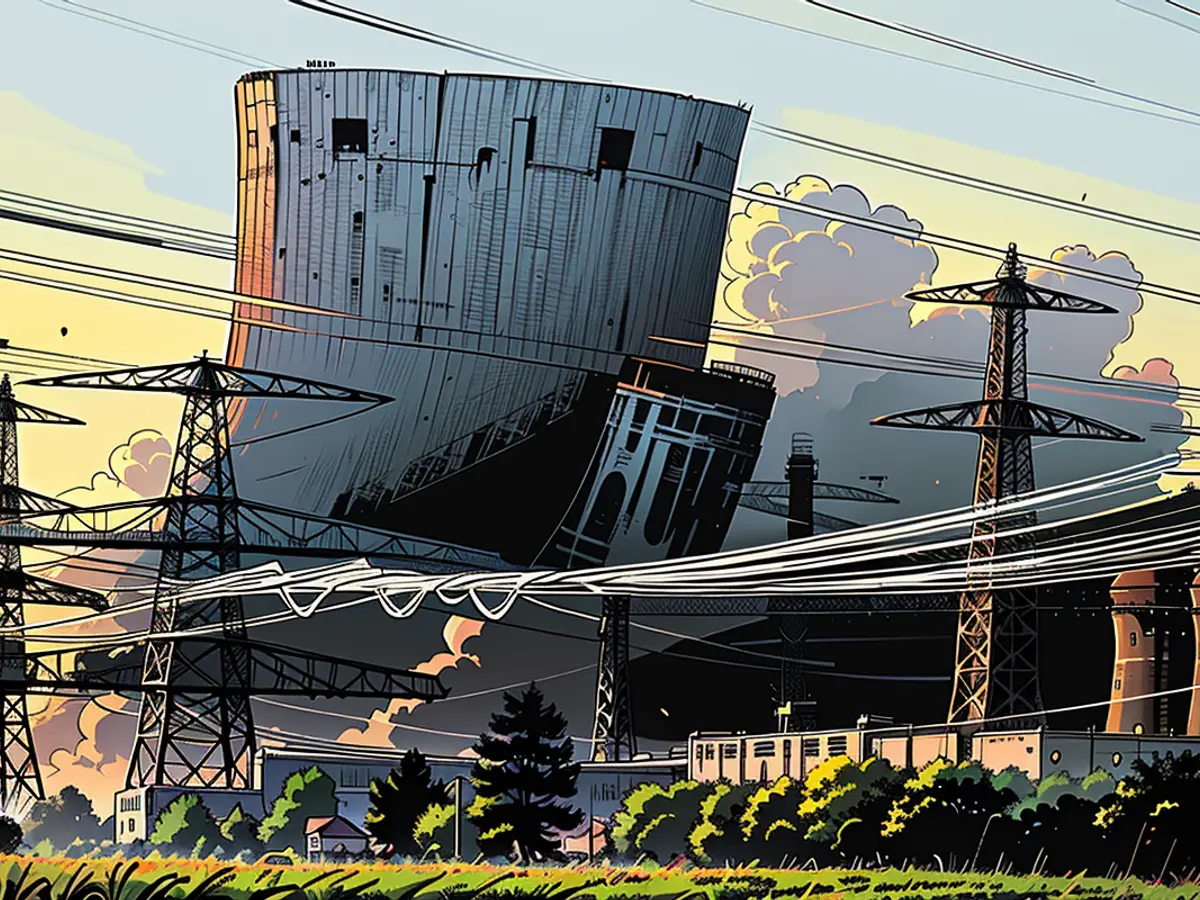- The Governing Body has yet to introduce a proposal for a regulation aiming to safeguard laborers from threats stemming from ionizing radiation exposure.
"We've always known which direction the wind was blowing by the steam plumes." Christian Keller, born in '79 and currently the first mayor of Grafenrheinfeld, is familiar with his community, marked by the notable cooling towers of the nuclear power plant. "The twins were a prominent landmark for me and probably many others in the region," he recounted. Kids frequently asked, "When will we reach home?" on their journey back from summer holidays, and the reply was often, "When you see the towers, another half hour," Keller mentioned. But now, these giants are a thing of the past.
A series of loud noises – and within 30 seconds, the cooling towers of the decommissioned nuclear power plant crumbled in the evening. Fifty years after the project's commencement, only two modest heaps of debris remained of the prominence symbols of the old high-risk technology, near Schweinfurt, the Franconian industrial city.
The event was delayed for more than an hour due to an interruption. A 36-year-old man climbed onto a power pole, leading the authorities to apprehend him. The authorities suspected the man of supporting nuclear power. "He will face significant charges," a police spokesperson announced.
To remove around 34,000 tons of reinforced concrete, metals, and plastics, 1,340 electronic detonators and 260 kg of explosives were utilized, the Schweinfurt district office revealed. This explosion produced approximately 55,000 tons of construction waste, primarily concrete. Around 50 firefighters and around 200 police officers were present at the site.
The Crowd Gathers for the Nuclear Power Plant Demolition
Thousands of spectators watched as the structures were demolished in the evening light from the meadows and fields surrounding the site adjacent to the Main. The area was cordoned off for safety reasons. Those aiming for a closer view hiked or cycled, as the authorities had restricted vehicle access.
The Juengling family from Haßfurt near Schweinfurt had positioned themselves on the other side of the Main, near Bergrheinfeld – complete with folding table, snacks, and games. "We mostly play Rummikub," said 39-year-old Nicole. Everybody was a bit excited, especially her 11-year-old son, who insisted they attend. "I enjoy watching things being destroyed," Maximilian admitted.
Not the First Demolition of a Nuclear Power Plant in Germany
The nuclear power plant was the longest-operating nuclear power plant in Germany until its discontinuation. Construction began in 1974. The first nuclear chain reaction occurred at the end of 1981 – two years after the current first mayor's birth. Power was supplied to the grid from June 1982. It was in service for 33 years until 2015. Since 2018, dismantling has been underway – and should likely continue for another ten years, according to project manager Matthias Aron.
The cooling towers were each 143 meters high. The base diameter was around 105 meters, and about 64 meters at the top. "Two-thirds of the materials will be reused," Aron explained – among other things, a storage area will be constructed on the site using the building materials.
According to the power plant operator Preussenelektra, this was the second time in Germany that the cooling towers of a decommissioned nuclear power plant have been demolished. In May 2020, two towers of the nuclear power plant in Baden-Württemberg's Philippsburg were also demolished this way – but without public access due to the coronavirus.
For the approximately three million euro demolition in Grafenrheinfeld, four out of five 380-kilovolt high-voltage lines, which merge in Grafenrheinfeld and are vital for Europe's power supply, had to be shut down. This was to avoid operational disruptions due to excessive dust.
Nuclear Waste Remains in Grafenrheinfeld
Even after the towers are gone, the power plant site will remain a security zone for several years. There are two interim storage facilities for nuclear waste on the site. The planned operational life of the interim storage facility for highly radioactive waste, i.e., nuclear fuel elements, ends in 2046. However, the disposal issue remains unanswered – it concerns around 2,000 containers from all over Germany that are to be safely stored for a million years.
The hunt for a final repository is a massive undertaking, "that can only succeed if society as a whole supports it," said Christian Kühn, president of the Federal Office for Nuclear Waste Management (BASE). The Federal Ministry for the Environment assumes that a final repository for highly radioactive waste will be found in Germany by 2050, which is about 20 years later than originally planned.
The cooling tower structures, once prominent landmarks, are now replaced by modest heaps of debris following their demolition. Despite the separation of vehicle access, many spectators hiked or cycled to get a closer view of the event.
Despite the demolition of the cooling towers, the power plant site will remain a security zone for several years due to the presence of two interim storage facilities for nuclear waste.







